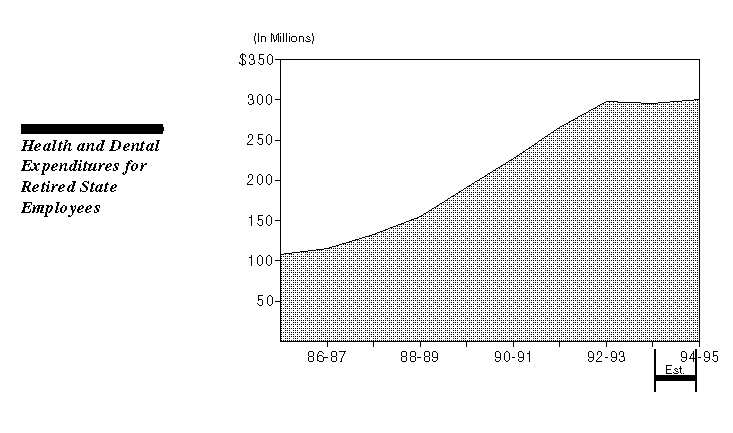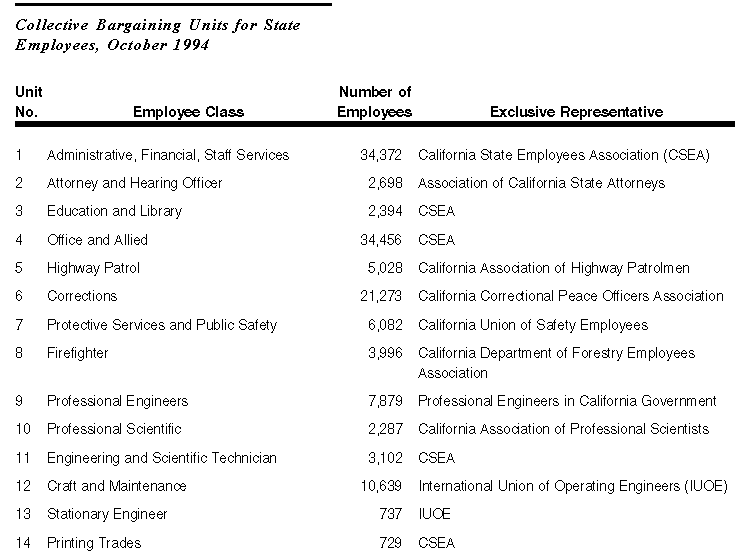
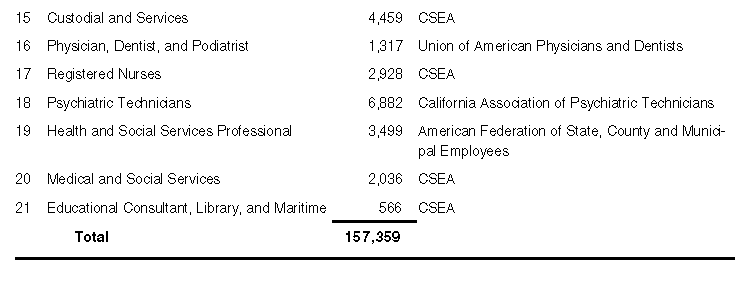
 Legislative Analyst's Office
Legislative Analyst's Office
COLLECTIVE BARGAINING
Collective bargaining of terms and conditions of employment between the state and its employees was authorized by the Legislature in 1977 with enactment of the Ralph C. Dills Act (Sections 3512 through 3524 of the Government Code). The act grants state employees the right to belong to organizations that serve as their exclusive representatives in contractual negotiations over wages, hours, and other terms and conditions of employment. The act requires the state and employee representatives to "meet and confer in good faith" and to endeavor to reach agreement on these matters. (Higher education employer-employee relations are governed by the Higher Education Employer-Employee Relations Act and are discussed in a following section.)
There are currently 12 unions representing approximately 157,000 state employees in 21 bargaining units (see chart). Each unit separately negotiates contracts called "memoranda of understanding" (MOU) with the Department of Personnel Administration (DPA)--the Governor's collective bargaining representative. These MOU typically cover periods of one to three fiscal years. Managerial and supervisory employees are not represented in collective bargaining, nor are certain other employees, including employees exempt from civil service, employees of the DPA, and most employees of the Department of Finance.
The state's current MOUs expire June 30, 1995. Negotiations are scheduled to start in January 1995 for MOUs to cover the 1995-96 fiscal year and, possibly, other years as well. State law requires that the administration and employee representatives endeavor to reach agreements before the Legislature adopts a budget act for the ensuing fiscal year. Historically, agreements rarely have been reached in time for the Legislature's consideration as part of the budget act deliberations.
Major issues in the upcoming negotiations will include cost-of-living adjustments for employee pay and state and employee shares in the cost of health insurance premiums.


The Higher Education Employer-Employee Relations Act (HEERA), enacted by the Legislature in 1978, governs collective bargaining in higher education. Unlike the case for the MOUs negotiated under the Ralph C. Dills Act, the MOUs negotiated between higher education employers and their employees are not subject to either review or approval of the Legislature.
Faculty and other staff of the California State University (CSU) are represented by one of six unions, and are members of one of nine bargaining units, as detailed in the chart below.
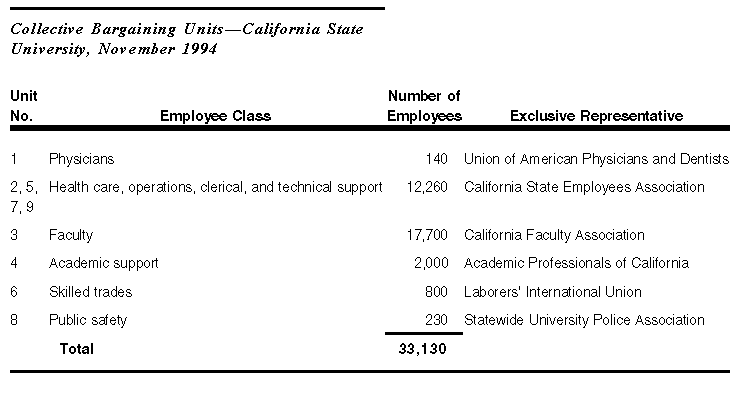
Faculty at the University of California (UC) have elected not to be represented in collective bargaining. (Faculty at the Santa Cruz campus have elected a form of limited bargaining which does not include the negotiation of salaries and benefits.) Most other staff in the UC system are represented by one of nine unions and are members of one of seventeen bargaining units.
Listed below are annual pay scales for a selected sample of state jobs. These are base pay amounts. They do not include benefits or various supplemental payments such as overtime, shift, or other pay differentials. Most state employees will receive a 3 percent cost-of-living-adjustment on January 1, 1995.
The following chart shows the number of state positions (excluding higher education and legislative staff) within specified annual pay ranges. The data reflect annualized base pay (either monthly or hourly basis). Overtime or other supplemental pay are not included.
As part of overall compensation of state employees, the state contributes to various retirement benefit plans. Most full-time state employees are mandatory members of the Public Employees' Retirement System (PERS). The table lists the active state employee members of the PERS and other state retirement systems as of June 30, 1993.
Most full-time state employees are mandatory members of the PERS, and are entitled, after specified periods of service, to defined retirement benefits. Employees are members of one of seven benefit plans, based on the nature of their position. Each of these plans has distinct benefits, all of which are specified under state law, and are contractual obligations of the state to current and retired employees. The following chart summarizes eligibility for these plans.
The following chart lists the seven retirement plans for state members with the number of active members and retirees.
The three plans pertaining to public safety employees generally provide for better benefits at earlier retirement ages than do the miscellaneous and industrial plans. All the plans provide an annual cost-of-living-adjustment (COLA) to pensions (up to 3 percent for second tier miscellaneous and industrial; up to 2 percent for others).
If sustained inflation occurs at higher rates, the Purchasing Power Protection Account in the PERS trust fund provides supplemental pension payments, provided adequate funds are in the account. These supplemental payments are intended to maintain pensions at no less than 75 percent of their original purchasing power.
The following chart displays the major features of the PERS retirement plans for state employees.
As part of overall compensation of state employees, the state pays all or a significant part of employees' health insurance premiums. The state provides similar benefits to retired state employees and their qualifying survivors.
The Public Employees' Retirement System (PERS) administers health insurance benefits (1) for state employees and retirees and (2) on a contracting basis, on behalf of more than 800 other public entities in California. Each year the PERS and medical providers negotiate contracts specifying the benefits and premium amounts for a variety of health insurance plans from which employees and retirees may choose. For the contract year beginning in August 1994, the PERS had contracts for 24 "basic" medical plans and 24 "supplement to Medicare" plans.
Under basic medical and supplement to Medicare plans, services are provided in one of two general ways:
More than 188,000 state employees (including California State University), who work on a half-time or more basis, are enrolled in health insurance plans paid for wholly or in part by the state. Almost 90 percent of these employees enrolled in HMO plans. In addition, over 87,000 state retirees are enrolled in these plans. In contrast to state employees, over one-half of retirees are enrolled in preferred provider organization (PPO) plans.
State law prescribes the maximum amounts the state contributes toward monthly health insurance premiums for state retirees. The charts below show the amounts for 1994-95 and the monthly premium for each health plan. State law further provides that the respective state contributions toward employees' premiums be set through collective bargaining. The maximum state contributions set by the current bargaining agreements were "frozen" at the 1991-92 levels and, therefore, now are less than those provided to retirees. The state/employee contributions for future years will be an issue in the collective bargaining process scheduled to begin in January 1995.
The state will spend a projected $680 million in 1994-95 for health and dental benefits for state employees, and an additional $300 million for retirees.
The chart below shows the trend in state expenditures for retiree health and dental benefits since 1985-86. (Similar data for active employees are not available.) The upward trend in those expenditures has moderated recently due to a slowdown in the growth of (1) numbers of retirees and (2) premium rates. The slowdown in the growth of numbers of retirees is probably a temporary phenomenon caused in part by individual decisions to postpone retirement in anticipation of enactment of early retirement incentives ("golden handshakes").
Future premium costs will depend on market forces, and the negotiating skills of the PERS (for health plan premiums) and the Department of Personnel Administration (for dental plan premiums).
PAY SCALES
A Sample of Annual Pay Scales
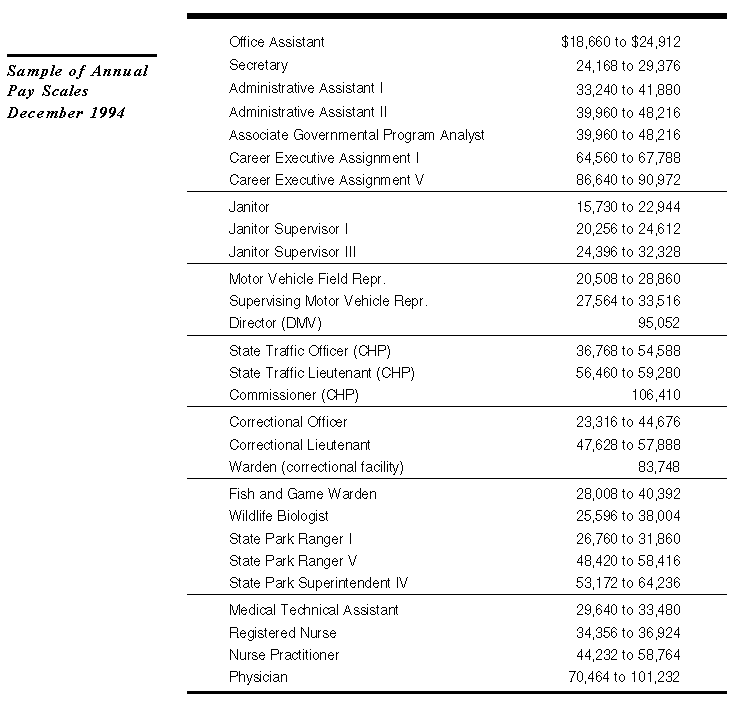
Most Employees Make Between $20,000 and $50,000
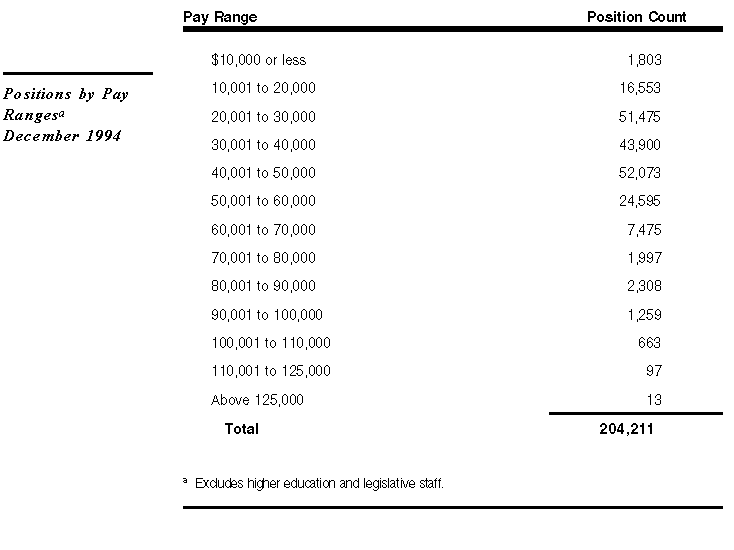
BENEFITS
Retirement Benefits: Most State Employees Are PERS Members

PERS Retirement Plans
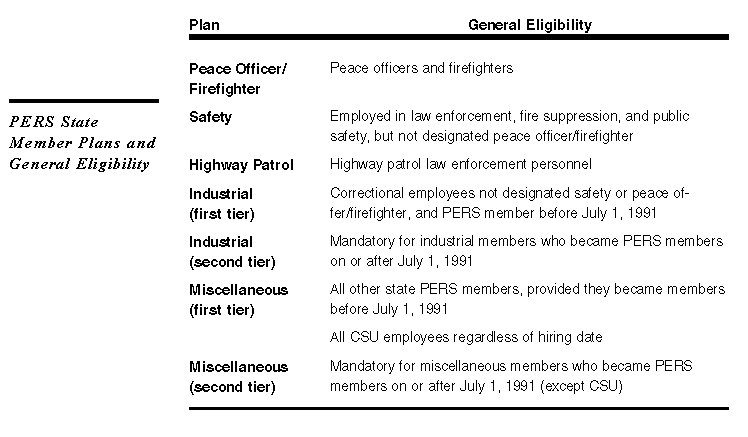
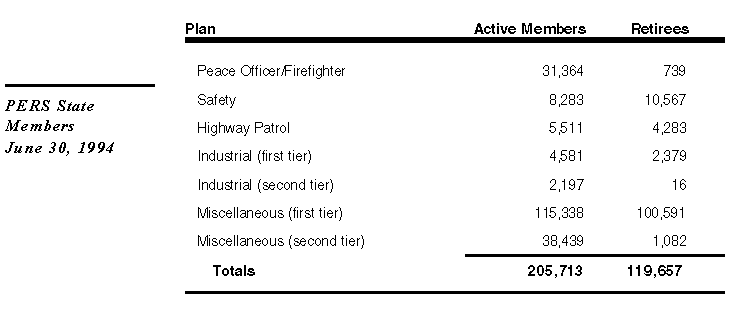
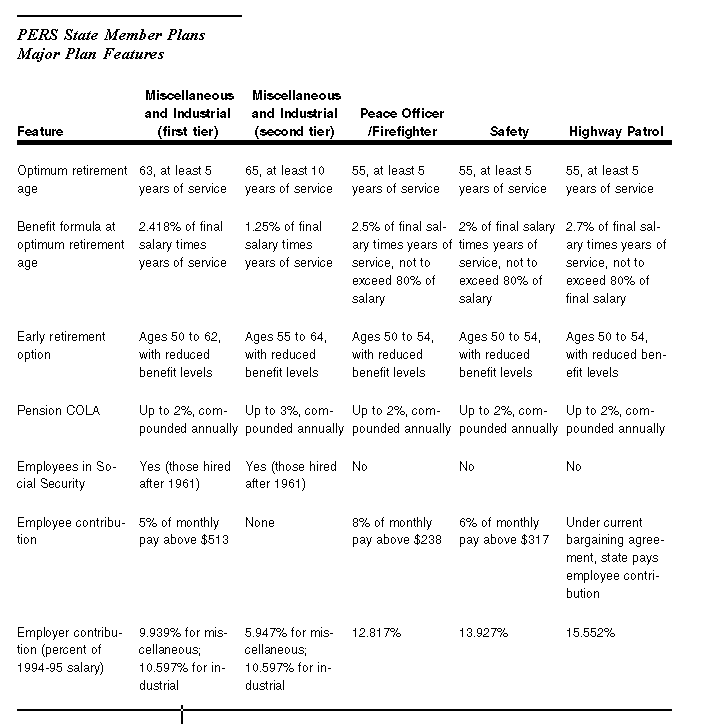
State Provides Health Insurance For 188,000 Employees And 87,000 Retirees
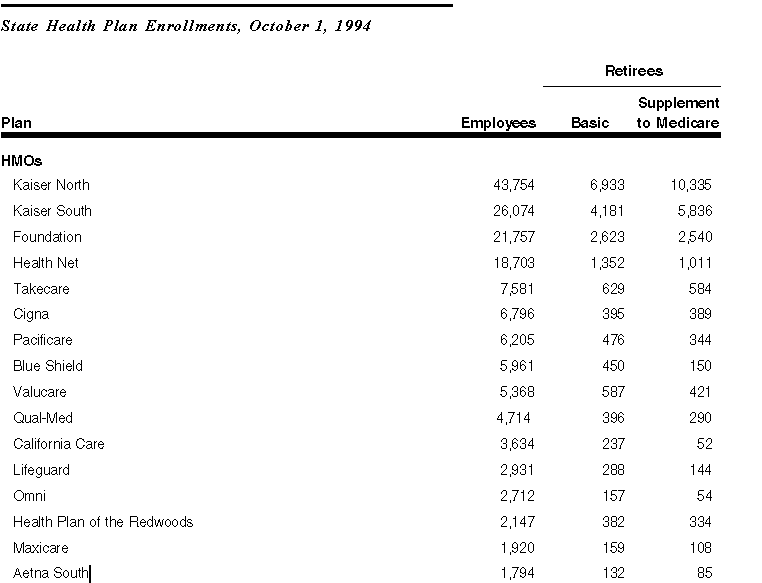
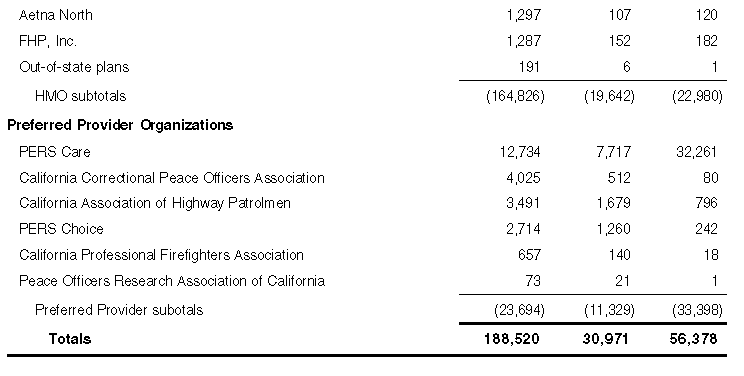
State Expenditures For Employee and Retiree Health Benefits

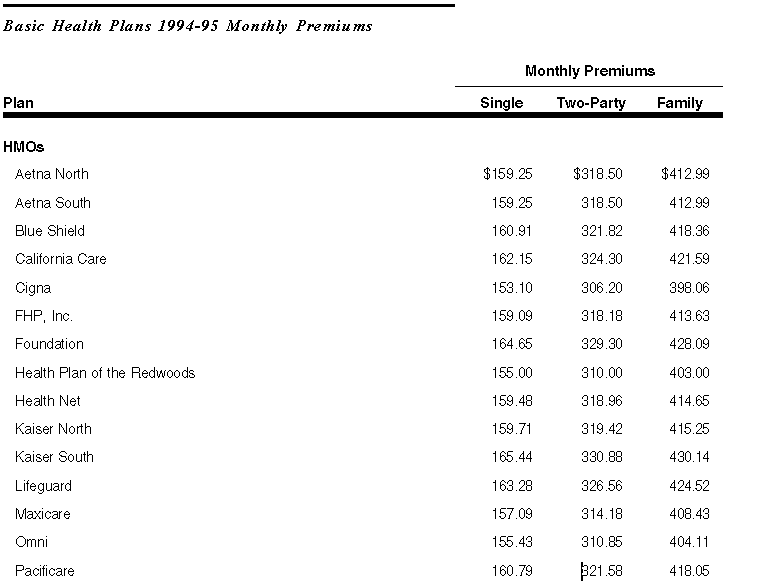
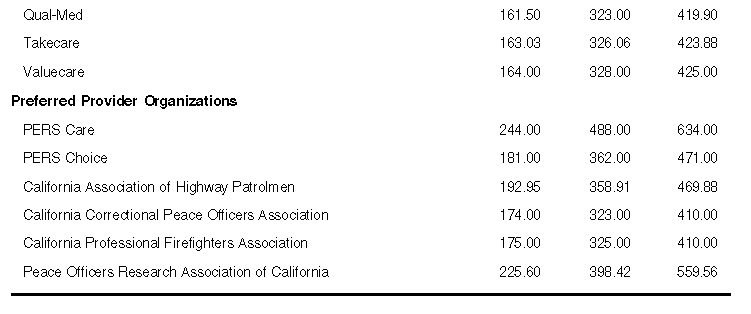
Retiree Health and Dental Costs Have Grown
